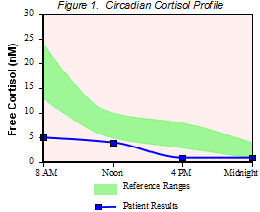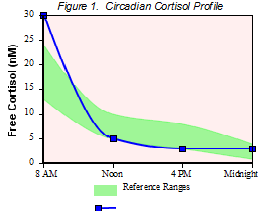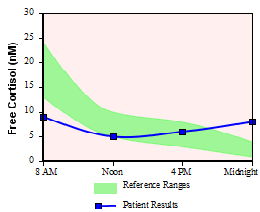Immunogloblins and Allergies
Allergies are caused by immunoglobulins. They tag onto things that don’t belong in the body and tell the immune system to attack.
We need immunoglobulins to develop immunity against infections. The problem is when they become too active and react against things that are otherwise harmless.
We have several types of immunoglobulins. The following are the ones important to understanding food allergy tests.
IgE
This is the classic allergic response. IgE causes sudden acute symptoms. This includes rashes, hives, coughs, sneezing, or a swollen tongue.
IgG
We need IgG to protect us against infections. Unfortunately, we can develop IgG reactions to food. IgG allergies are delayed. It can take hours, or even a few days to notice symptoms.
IgA
IgA is secreted where the body has contact with the outside world. This is most active the digestive tract and lungs.
Food intolerance
These are non-allergy reactions to food. Some people are lactose intolerant and have symptoms from milk. Eggs are another food that some people are intolerant against. I‘m listing this here because some people can have all the allergy testing in the world, and their reaction won‘t show because it isn‘t a true allergy.
How Allergy Tests Work
Food Allergy Lab Test Options
The following covers different ways I have to test food allergies with clients. It would be nice to have just one lab that covers everything. Since we have different types of immunoglobulins and special complexities testing for gluten, it isn’t so simple.
IgG Food Allergy Tests
IgA Food Allergy Tests
For IgA I use another lab, diagnostechs. They measure IgA through saliva. I typically do not just for IgA allergies by themselves. Rather, these markers are included larger panels diagnostechs has for the digestive system.
Functional digestive system tests consist of both stool and saliva samples. Saliva is used to test for IgA against gliadin (wheat), soy, cassein (dairy) and eggs. They can also test IgA against various parasites like Ameba and some worms.
On the stool portion they lab can tests for parasites by microscopic examination, bacterial and yeast cultures, plus several markers for inflammation in the gut, pancreatic enzyme production and immune system activity.
Celiac and Gluten Sensitivity Lab Tests
In case of an allergy to gluten (a protein in wheat, rye, barley, spelt and oats) it’s important to do additional tests. For some people just one crumb of a food containing gluten can set off an inflammatory cascade.
The following tests should be run:
- IgA gliadin
- IgG gliadin
- IgG gluten
- Deamindated gliadin peptide IgA
- Deamindated gliadin peptide IgG
Celiac genetic panel is a good followup to get a more definitive answer on gluten sensitivity and celiac disease.
- HLA-DQ2
- HLA-DQ8
- HLA-DQA1
- HLA-DQB1
Non-Lab Allergy Test Options
Allergy Elimination Challenge Diet
For this no lab testing is needed.The patients first removes the most common allergens from their diet. This includes:
Gluten grains (wheat, barley, rye, spelt, oats)
Soy
Corn
Dairy
Eggs
Peanuts
Citrus fruits
Artificial foods.
After a month the patient then reintroduces each of these foods one at a time and tracks all symptoms for 3 days before adding back another food. Any worsening of symptoms shows an allergy.
Some people in natural health care believe this is the gold-standard test for food allergies. They may say to not even bother with lab tests because those can be unreliable.
In real life few people are going to bother doing it properly. It takes months of carefully planning a diet and charting symptoms to go through the elimination diet. Many food allergies are delayed. So in order to uncover it this way you have not just totally eliminate it, but be very precise with tracking symptoms on reintroduction.
Most people are allergic to the common allergens of gluten, corn, soy, diary and eggs. It’s easier to a food allergy test which then convinces them to eliminate the foods and feel better.
Applied Kinesiology For Allergies
I keep over 250 different food vials in the office to test clients.
Advantages to muscle testing over lab tests:
- Inexpensive
- Immediate results
- Test isn’t dependent on finding the right immunoglobulin, or else giving a false negative
- There are several desensitization techniques that practitioners may use with muscle testing. So this can be part tests and treatment.
Technically, this is not a true “allergy test.” An allergy means you have an immunoglobulin response. If holding a vial for dairy makes someone go weak that may be an immunoglobulin response. It may be a food intolerance. It may not be nutritionally good for the body at that movement.
The True Purpose of Allergy Tests
Eliminating allergenic foods can be difficult. Telling someone to go gluten free is a huge lifestyle change. Getting a child to do it is almost impossible. For both children and adults food is part of our social connections. Going without that food can mean missing out on social engagements, not just a tasty meal.
I don’t really need to run a food allergy test to suggest you may feel better without having diary, corn, soy, or wheat. You don’t have to come into my office. I can just write it here, if most people eliminate those foods they will feel better.
However, considering how hard it is to much such lifestyle changes we have to know for sure. Seeing it on a lab tests lets people know the food sacrifices they are making are well worth it.
And yes, sometime that pinto bean or banana will come up on a lab test and people need to eliminate those as well.


